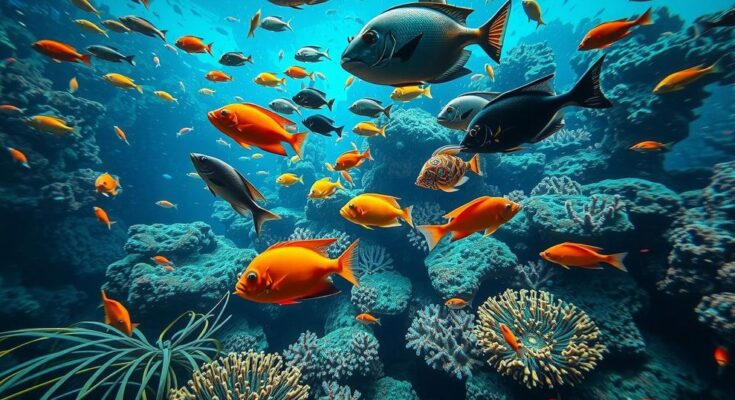Scientists have discovered over two dozen new fish species in Peru and the Amazon, including unique types such as blob-headed catfish and mini pipehorses. The research highlights the importance of local community involvement and modern techniques like environmental DNA analysis. As these ecosystems face threats from human activities, urgent conservation measures are needed to protect the newly identified species and their habitats.
Recent research has unveiled over two dozen previously unknown fish species in Peru and the Amazon Basin, showcasing a fascinating variety of aquatic life, including a unique blob-headed catfish, a tiny pipehorse, and three newly identified pacu species. This discovery highlights the critical importance of conserving these biodiverse yet fragile ecosystems.
Dr. Trond Larsen led a team from Conservation International’s Rapid Assessment Program in field surveys conducted in Alto Mayo, Peru. Collaborating with Dr. Marcelo C. Andrade from the Federal University of Maranhão, the team examined pacu populations in the Amazon, uncovering previously cryptic species. One of the distinct species identified was the blob-headed catfish, notable for its enlarged head and unclear function, emphasizing the need for further scientific investigation.
The local communities in Peru and South Africa significantly contributed to these findings, as local fishers and Indigenous groups facilitated access to remote habitats where these fish thrive. Researchers utilized modern techniques, such as environmental DNA (eDNA) analysis and underwater camera traps, to identify rare species, enhancing traditional survey methods.
These discoveries arise amid pressing conservation challenges, as many newly identified species inhabit vulnerable ecosystems facing threats from deforestation, mining processes, and climate change. Without timely intervention, these species may become endangered before their functions within the ecosystem are understood. The black-barred pacu species also face pressures, valued in the ornamental fish trade and local fisheries for their aesthetic appeal and economic importance to Amazonian communities.
To ensure the survival of both these newly recognized fish and the communities reliant on them, researchers are focusing on studying population dynamics and devising conservation strategies that promote ecological preservation alongside local livelihoods. Ongoing identification of new species reinforces the necessity of conservation efforts and underscores the urgency of protecting freshwater and marine ecosystems.
With the continuing impacts of human activity on these habitats, the identification and protection of these unique species are more critical than ever, propelling researchers closer to rewinding the comprehensive web of life hidden beneath aquatic surfaces.
The recent discovery of numerous new fish species in Peru and the Amazon underscores the rich biodiversity of these regions and the pressing need for conservation. With local communities playing a vital role in these findings, the integration of modern scientific techniques poses great potential for protecting these vulnerable ecosystems. Addressing the conservation challenges facing these species is imperative to ensure their survival and the sustainability of the communities that depend on them.
Original Source: dailygalaxy.com




